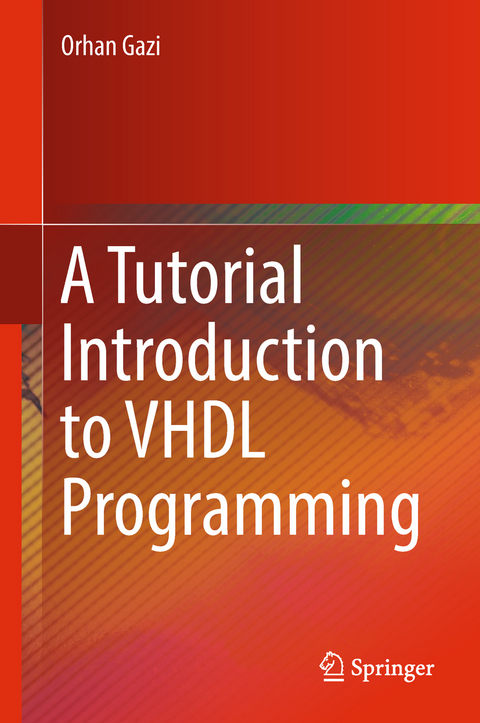
A Tutorial Introduction to VHDL Programming
Springer Verlag, Singapore
978-981-13-2308-9 (ISBN)
The book is divided into eight chapters, covering aspects ranging from the very basics of VHDL syntax and the module concept, to VHDL logic circuit implementations. In the first chapter, the entity and architecture parts of a VHDL program are explained in detail. The second chapter explains the implementations of combinational logic circuits in VHDL language, while the following chapters offer information on the simulation of VHDL programs and demonstrate how to define data types other than the standard ones available in VHDL libraries. In turn, the fifth chapter explains the implementation of clocked sequential logic circuits, and the sixth shows the implementation of registers and counter packages. The book’s last two chapters detail how components, functions and procedures, as well as floating-point numbers, are implemented in VHDL.
The book offers extensive exercises at the end of each chapter, inviting readers to learn VHDL by doing it and writing good code.
Orhan Gazi is an Associate Professor at the Electronic and Communication Engineering Department, Cankaya University. He completed his BS, MS, and PhD degrees in Electrical and Electronics Engineering from Middle East Technical University, Ankara, Turkey, in 1996, 2001 and 2007, respectively. His research areas involve signal processing, information theory, and forward error correction. More recently, he has begun studying polar channel codes and preparing publications in this area. He has published several textbooks on Digital Signal Processing and Information Theory, as well as a monograph on Channel Coding.
Entity, Architecture and VHDL Operators.- Combinational Logic Circuit Design and Concurrent Coding in VHDL.- Simulation of VHDL Programs.- User Defined Data Types, Arrays and Attributes.- Sequential Circuit Implementation in VHDL.- VHDL Implementation of Logic Circuits Involving Registers and Counters.- Packages, Components, Functions and Procedures.- Fixed and Floating Point Numbers.
| Erscheinungsdatum | 18.09.2018 |
|---|---|
| Zusatzinfo | 29 Illustrations, color; 385 Illustrations, black and white; VII, 251 p. 414 illus., 29 illus. in color. |
| Verlagsort | Singapore |
| Sprache | englisch |
| Maße | 155 x 235 mm |
| Themenwelt | Informatik ► Theorie / Studium ► Algorithmen |
| Informatik ► Weitere Themen ► Hardware | |
| Technik ► Elektrotechnik / Energietechnik | |
| ISBN-10 | 981-13-2308-9 / 9811323089 |
| ISBN-13 | 978-981-13-2308-9 / 9789811323089 |
| Zustand | Neuware |
| Informationen gemäß Produktsicherheitsverordnung (GPSR) | |
| Haben Sie eine Frage zum Produkt? |
aus dem Bereich


